Proms and the ENO at Printworks London
Saturday 3 September, 3.00pm–c4.15pm and 8.00pm–c9.15pm
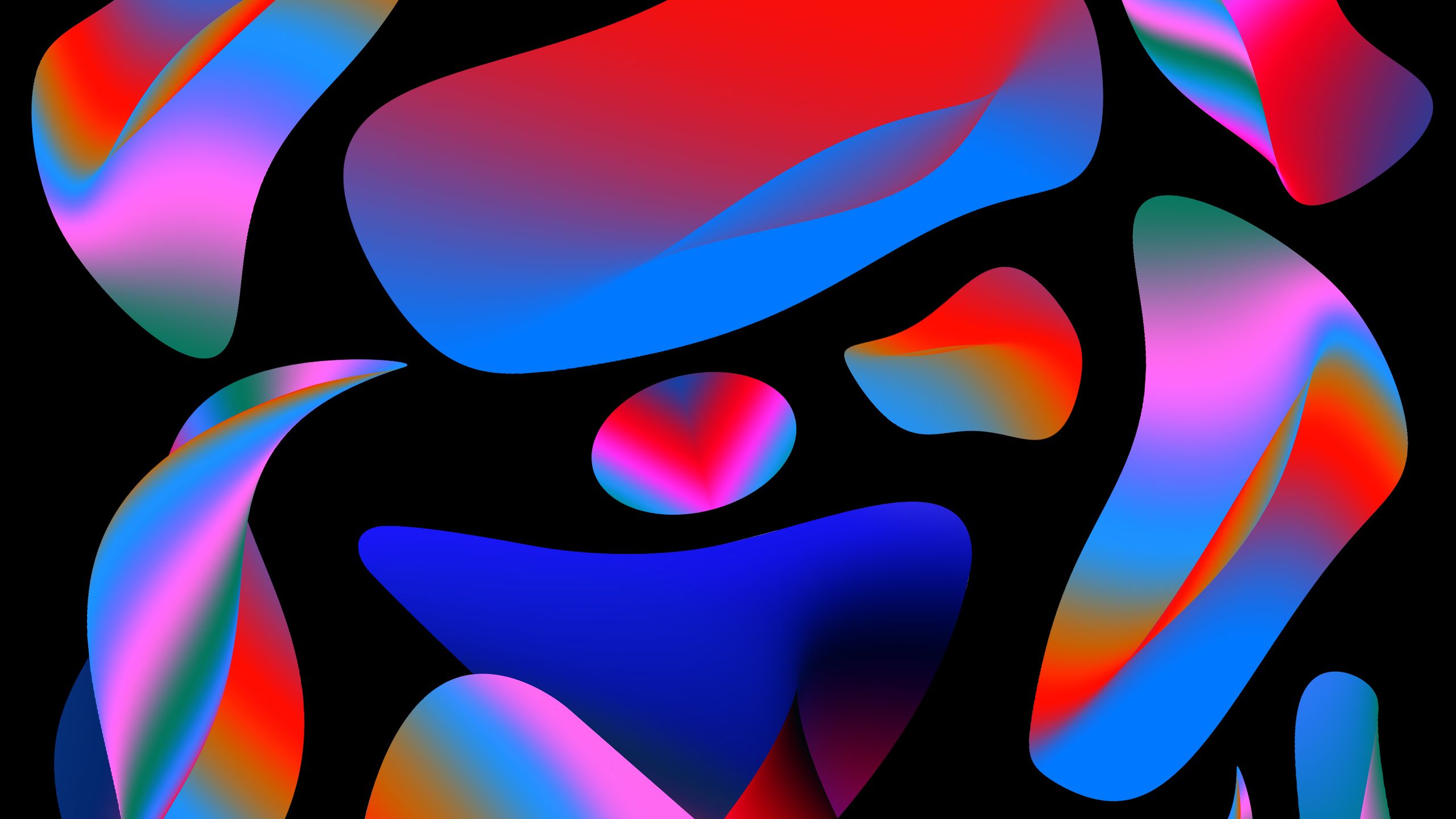
Glass Handel
George Frideric Handel Tolomeo, re d’Egitto – ‘Inumano fratel … Stille amare’ 8’
Philip Glass Songs from Liquid Days – ‘Liquid Days’ 6’
first performance at the Proms
Handel Flavio – ‘Rompo i lacci’ 6’
first performance at the Proms
Glass Cymbeline – ‘No more, you petty spirits’
BBC commission: world premiere c5’
Handel Rinaldo – ‘Lascia ch’io pianga’ 5’
Glass Monsters of Grace – ‘In the Arc of Your Mallet’ 5’
first performance at the Proms
Handel Rodelinda – ‘Vivi, tiranno’ 6’
Glass The Fall of the House of Usher – ‘How all living things breathe’ 5’
first performance at the Proms
Handel Amadigi di Gaula – ‘Pena tiranna’ 7’
first performance at the Proms
Glass 1000 Airplanes on the Roof – ‘The Encounter’ 4’
first performance at the Proms
Interspersed with specially commissioned soundscapes
There will be no interval
Anthony Roth Costanzo counter-tenor
Daniel Applebaum dance staging
James Bonas stage director
Glenn Brown live painting
Justin Peck choreographer
Raf Simons costume designer
Jason Singh soundscapes
J Bautista, Chia-Yu Hsu, Jack Thomson, Michael Walters, Patricia Zhou dancers
The English National Opera Orchestra
Karen Kamensek conductor
Ushers
Ebony Arthur, Holly Ashman, Zhanel Atymtayeva, Jack Clements, Grace Coulson-Harris, Lucy Duncan, Lavinia Haigh, Michael Marker, Chloe Matharu, Emily Mckay, Rachel McKenna, Jeremy Mitchell, Becky Ohue, Luci Packer, Isabelle Parker, Shayde Sinclair, Aaliyah Taylor-Nelson, Abigail Thompson, Ruby Thompson, Ada Ubaniak
Created and co-produced with Anthony Roth Costanzo, Cath Brittan, Visionaire and the English National Opera, in collaboration with Printworks London; originally co-produced by Opera Philadelphia, the Barnes Foundation, National Sawdust and the Cathedral of St John the Divine

The 3.00pm concert is broadcast live by BBC Radio 3. You can listen on BBC Sounds until Monday 10 October.
Sight and Sound
Counter-tenor and co-producer Anthony Roth Costanzo introduces the multidisciplinary Glass Handel project ahead of today’s performances
Handel defined me; Philip Glass changed me. My career as a counter-tenor has been evenly divided between Baroque and contemporary music, with Handel’s dramatic lyricism laying a foundation for how I approach singing, and Glass’s maximal simplicity providing a springboard for who I can be as an artist.
Repetition is a key ingredient that each composer uses to peel away the layers of human psychology: Handel writes most arias in da capo form (A–B–A) and repeats little morsels of text over and over within that structure. Repeat signs famously abound in Glass’s scores, creating mathematical permutations of musical chunks that slowly allow for transcendence. But does repetition get boring? As a singer, it’s my job to find musical and dramatic through-lines that keep the momentum moving forward even when the music is going back.
However, I identify as much as a producer as I do a singer, and finding ways for classical music to tell new stories and to engage more people has become a mission for me. What if I asked some of the world’s greatest artists in the visual fields to show us this music through their lens? Dance, painting, film and fashion might reveal new facets of this sound-world that I couldn’t imagine on my own, and which might entice new audience members in the process. I have joined forces with creative powerhouse Visionaire and strategic magician Cath Brittan to devise something more closely resembling an immersive installation than a traditional concert.
You’ll therefore notice that we aren’t in the Royal Albert Hall but in a huge former printing plant that used to produce things you could see, which was then transformed into a nightclub specialising in things you can hear. Your attention will be divided between different mediums and different parts of the space, but ultimately you are in charge of your own experience. Promenade between different art forms and become immersed in how dancers, film-makers, a painter, a sound artist and a fashion designer hear this music, and you may find their visual world colours how you hear it yourself.
As the late, great writer Joan Didion said, ‘We tell ourselves stories in order to live.’ Each aria, including the world premiere that Glass has written for this occasion, puts forth a musical and dramatic narrative. When combined with the other building blocks of this experience provides, they create an endless number of possible stories in this cavernous space which I hope can make us all feel very much alive.
George Frideric Handel (1685–1759)
Tolomeo (1728) – ‘Inumano fratel … Stille amare’
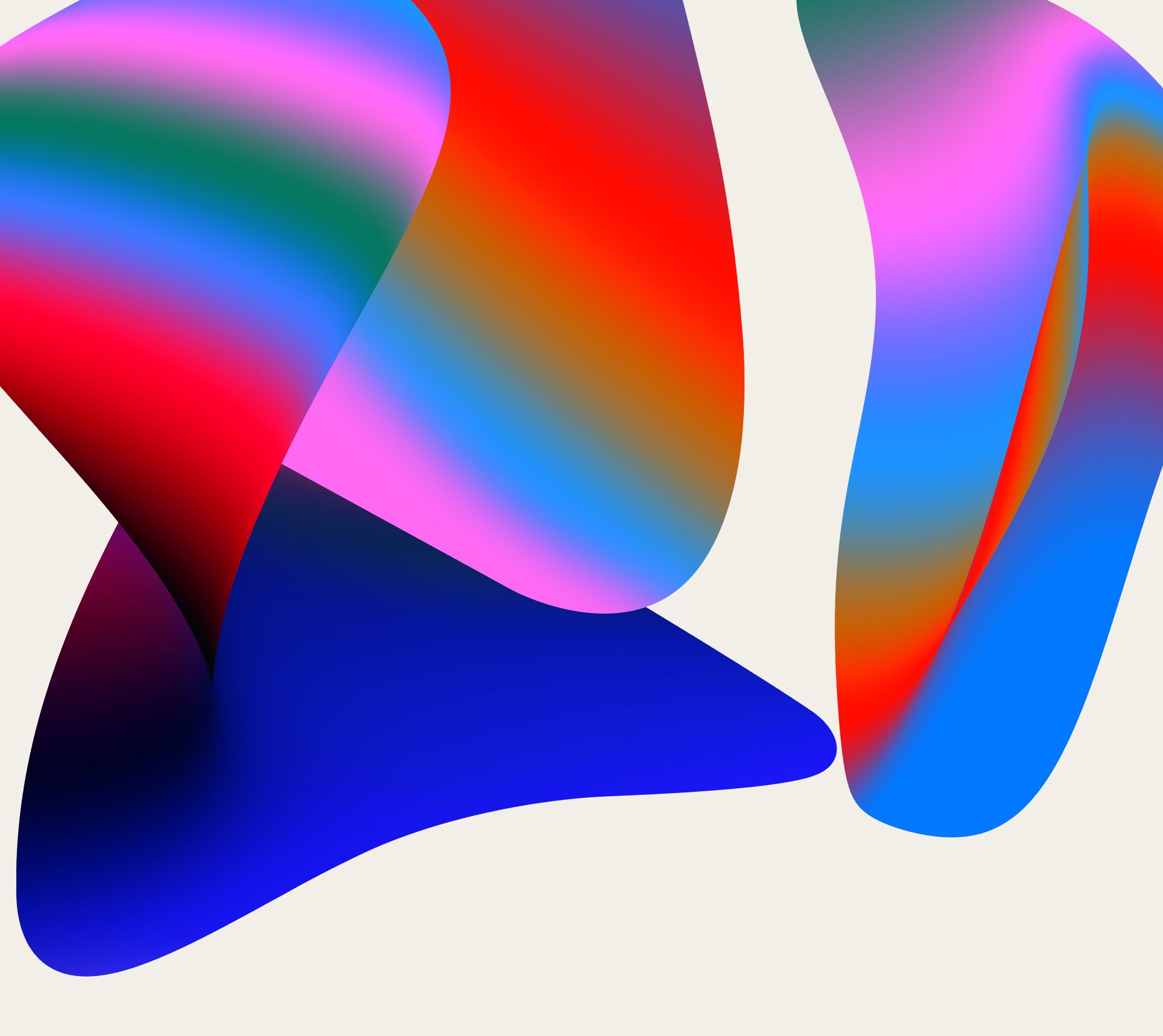
Tolomeo – aka Ptolemy IX, King of Egypt – is the archetypal Handel hero: noble, faithful in love, beset by the machinations of others and his own misconceptions. By the third act he is so far down he is prepared to take poison on a dare. He has time to curse a couple of family members in a stretch of recitative (musical declamation), with pangs from violins, before feeling the effects as he goes into the poignant minor-key melody of his aria. Unable to finish properly, he slips away – but only into sleep, it turns out, so that the opera can bounce back into the happy ending it needs.
Philip Glass (born 1937)
Songs from Liquid Days (1986) – ‘Liquid Days’

This first Philip Glass sample is not from a theatre score but from a set of six songs he wrote in 1986, setting lyrics by well-established songwriters – David Byrne in the instance of ‘Liquid Days’. The songs were not intended for a single performer; for the first recording Glass chose different artists for each – The Roches, a sister act, for this number. A solo counter-tenor, however, can be no less haunting, no less sensual. The song floats, settles into a domestic scene with a personified Love, and floats on. A–B–A: this is just like the shape of Tolomeo’s aria.
George Frideric Handel
Flavio (1723) – ‘Rompo i lacci’

Like Tolomeo, Flavio was one of the operas Handel wrote in the 1720s for singers he went to Dresden to recruit for his London company. First among them was the castrato known as Senesino, for whom Handel wrote the role of Tolomeo and also that of Guido in Flavio. We meet this character in the middle of the second act, where, to avenge an insult given his father, he is being asked to go back on his recent marriage to the woman he loves. He must. He can’t. That is the prompt for an aria of wild virtuoso runs.
Philip Glass
Cymbeline (2022) – ‘No more, you petty spirits’
BBC commission: world premiere

Glass’s first creative encounter with Shakespeare came in 1989, when he wrote music for an Off-Broadway production of Cymbeline. Now he returns to the play – specifically to the dream sequence in which dead members of the suffering hero’s family appear and demand intervention from Jupiter. Promptly the king of the gods descends, dismisses the defunct and says he will do what they ask but only because such is his will. Or rather, he sings all this, for that is probably what Shakespeare expected and what Glass makes possible. After gearing himself up to take on the voice of the god, the singer delivers Jupiter’s pronouncement with golden authority before rising to a spectacular exit line.
George Frideric Handel
Rinaldo (1710–11) – ‘Lascia ch’io pianga’

Handel was not one to waste a good tune. He wrote this one for a dance in his first opera, Almira, which he composed for Hamburg when he was 19. Two years later, now in Rome, he made it an aria in an oratorio. Four years after that it gave him a number for the opera he was writing to introduce himself to another new city: London. The opera, Rinaldo, was a triumph, and he decided to stay. ‘Lascia ch’io pianga’ is sung by the leading female character, Almirena, who is alone onstage, abducted from her lover. The middle section is as short as may be, but affecting, before the return of the lament, echoed by the orchestra.
Philip Glass
Monsters of Grace (1998) – ‘In the Arc of Your Mallet’

First performed in 1998, Monsters of Grace was a show with music by Glass to words by the most venerated of Sufi poets, Rumi. An elaborate staging by Robert Wilson, with whom Glass had worked since Einstein on the Beach almost a quarter of a century before, was realised by computer animation. The words of ‘In the Arc of Your Mallet’ fall away, having brought the singer to a point of great inner strength and eventual calm.
George Frideric Handel
Rodelinda – ‘Vivi, tiranno’

Rodelinda was another of Handel’s operas from the fabulous 1720s, again with Senesino leading the cast. This time the great castrato was singing the role of Bertarido, deposed king of Lombardy, working to reclaim his throne and his queen. As in the excerpt from Tolomeo, we jump in near the end. Bertarido has just killed the deeply villainous Garibaldo (bass) but spared the life of the not-so-villainous Grimoaldo (tenor), who displaced him as king. This is again an aria in the standard pattern: a short contrasting middle section is followed by a full reprise. Again, too, vocal prowess on the part of the singer proves the character’s greatness of mind.
Philip Glass
The Fall of the House of Usher (1987) – ‘How all living things breathe’

What is unspeakable may yet be sung: opera rests on this. In 1987 Glass produced a treatment of Edgar Allan Poe’s story of family doom and dark implications, The Fall of the House of Usher. Arthur Yorinks’s libretto proceeds largely in dialogue for Roderick Usher and the friend he has summoned more to witness than to help, but at the end of the first act Roderick breaks out in this aria. Imagining the outside world of natural life, he seems to feel a breath of fresh air. But his mind circles back inside, to the house, to its inhabitants, to their fate.
George Frideric Handel
Amadigi di Gaula (1715) – ‘Pena tiranna’

After the success of Rinaldo, Handel was called on to compose an opera for London almost annually for the next few years, culminating in Amadigi di Gaula, which brought one central aspect of the form to a quintessence. Love is an animal, lurking in the orchestra. The characters – just four of them – find and lose one another in this garden of bewitching sounds (including solo bassoon and oboe). Dardano arrives alone in the second act halfway through, but he knows what has been going on. Oriana loves Amadigi. He can only lament.
Philip Glass
1000 Airplanes on the Roof (1988) – ‘The Encounter’

Sometimes words fail – in the face, say, of the unique. ‘No-one will believe you’, warn the aliens encountered by the lone character of 1000 Airplanes on the Roof, a theatre piece Glass wrote in 1988 with spoken text by David Henry Hwang. Accordingly, the moment of ‘The Encounter’ is wordless. A voice is there, singing. (In the original performances this was Linda Ronstadt.) But there are no words. Music does not need them to express – what? Wonder? Bewilderment? Love? No, there are no words.
Programme notes © Paul Griffiths
A critic for over 30 years, including for The Times and The New Yorker, Paul Griffiths is an authority on 20th- and 21st-century music. Among his books are studies of Boulez, Cage and Stravinsky, as well as Modern Music and After and A Concise History of Western Music. His most recent novels are Mr Beethoven (2020) and The Tomb Guardians (2021).
Biographies
Anthony Roth Costanzo counter-tenor
PROMS DEBUT ARTIST
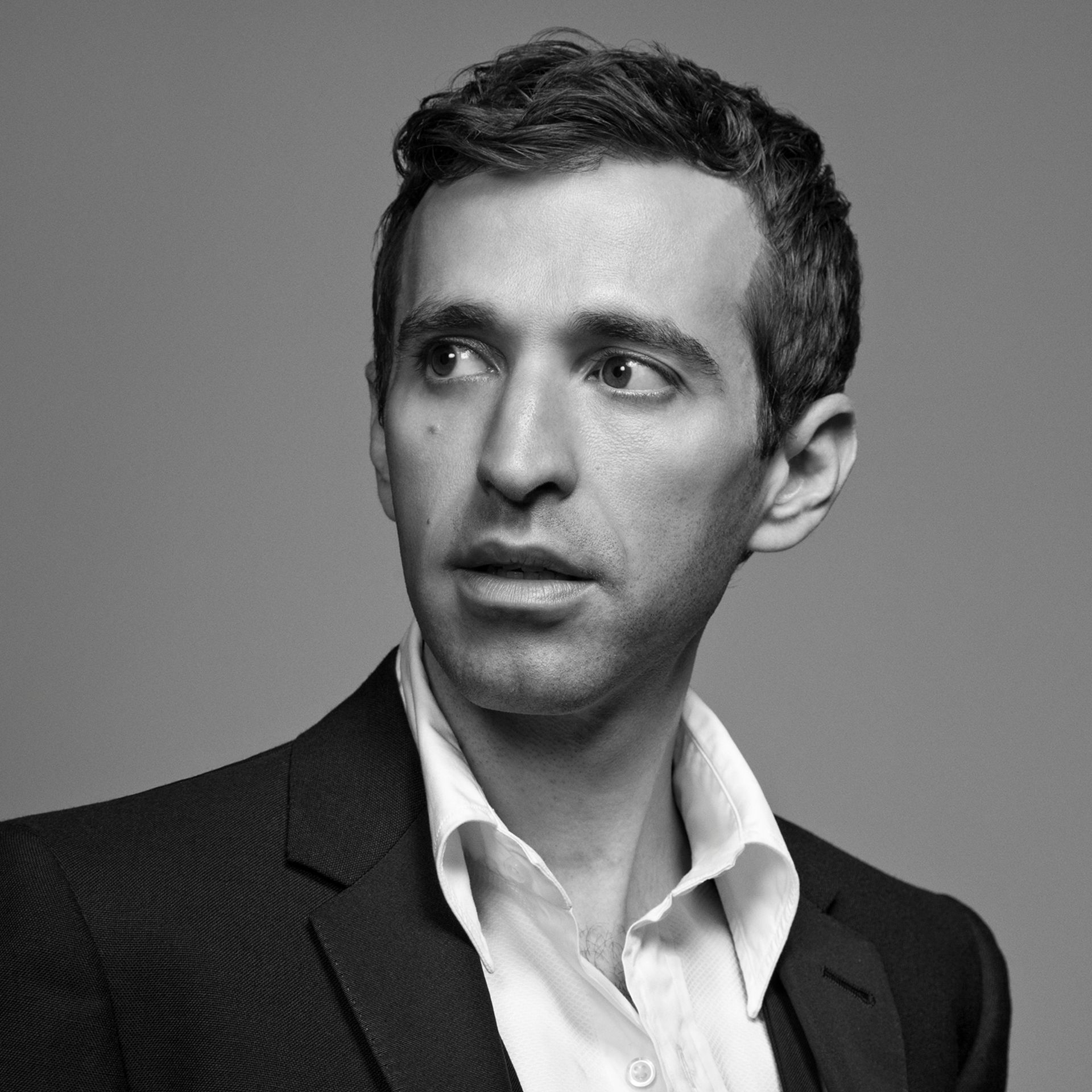
Photo Matthu Placek
Photo Matthu Placek
Having performed professionally from the age of 11, American counter-tenor Anthony Roth Costanzo came to international attention in 2012 when he won First Prize at Operalia in Beijing. Early European debuts took him to Madrid’s Teatro Real, Glyndebourne (both 2014) and English National Opera (2015). His interpretation of the title-role in Philip Glass’s Akhnaten at ENO (2016) earned him universal acclaim, the subsequent Metropolitan Opera recording winning a Grammy in 2022. He recently reprised the role for the Met and is due to do so for ENO in 2022–23. In March this year he sang Unulfo in Handel’s Rodelinda for the Met, and earlier in the season he performed at the Teatro Real in a new staging of Partenope.
On the concert platform, he has sung Prince Go-Go in Ligeti’s Le Grand Macabre under Sir Simon Rattle with both the Berlin Philharmonic and London Symphony Orchestra, and under Alan Gilbert with both the NDR Elbphilharmonie Orchestra and New York Philharmonic. With the Cleveland Orchestra he has sung in Carmina burana and Bernstein’s Chichester Psalms, and he is a regular soloist in Handel’s Messiah.
His debut album, the Grammy-nominated ARC: Glass/Handel (2018) with Les Violons du Roy and Jonathan Cohen, was launched as a multidisciplinary and immersive run of performances at Opera Philadelphia’s Festival O18 and at New York’s St John the Divine cathedral. His second album, Only an Octave Apart with Justin Vivian Bond, was released in January and has seen performances across the USA, including as part of his role as New York Philharmonic Artist-in-Residence.
Karen Kamensek conductor
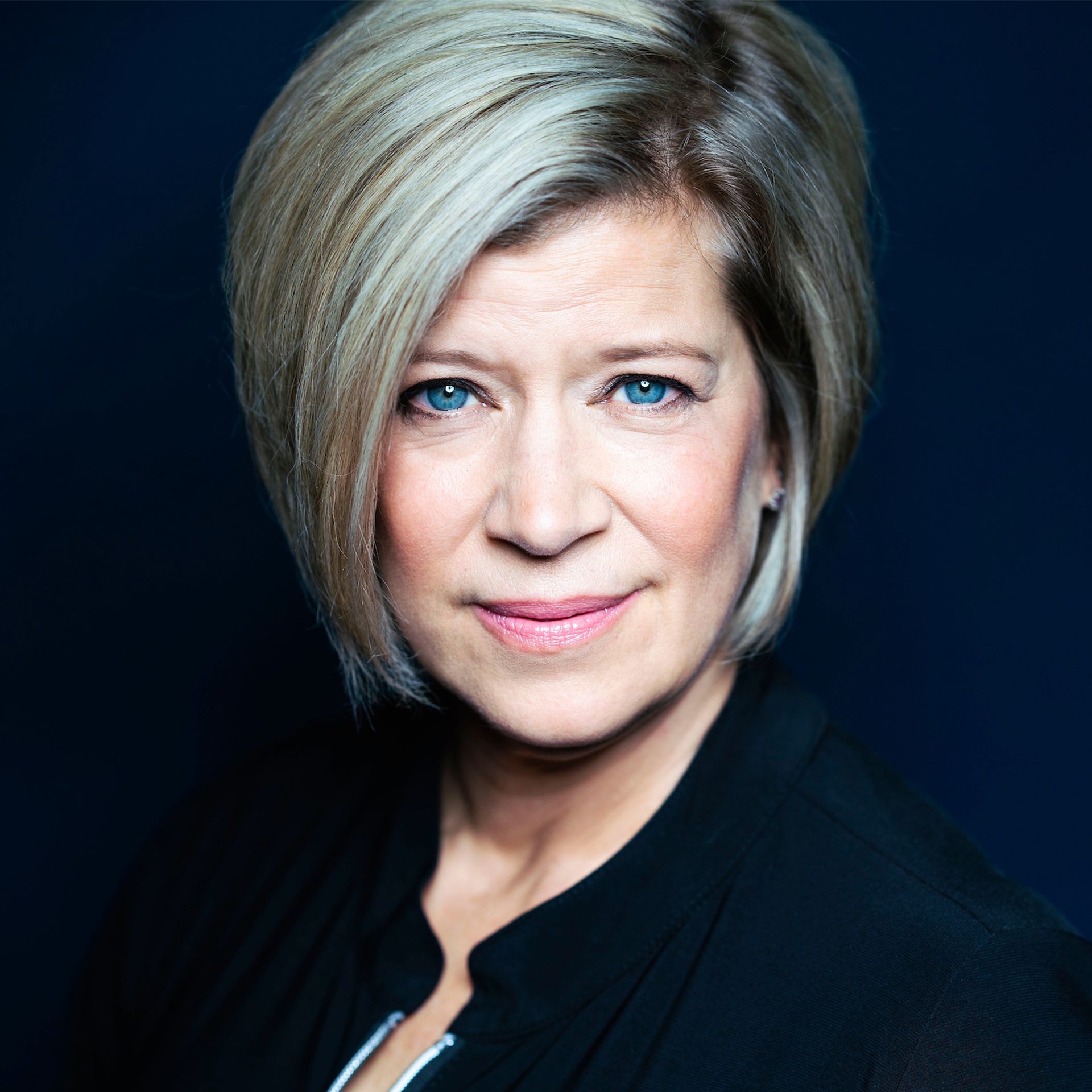
Photo Todd Rosenberg
Photo Todd Rosenberg
Chicago-born Karen Kamensek is at home on both opera and concert stages, and in a broad range of repertoire. She has held major appointments at the Vienna Volksoper (2000–22); Freiburg Theatre (2003–6); Slovene National Theatre, Maribor (2007–8); Hamburg State Opera (2008–11); and Hannover State Opera (2011–16). In Hannover she conducted numerous new productions including Shostakovich’s The Lady Macbeth of the Mtsensk District, Wagner’s The Mastersingers of Nuremberg, Puccini’s Il trittico, Detlev Glanert’s Caligula and Janáček’s Jenůfa.
She has also made guest appearances at major opera houses around the world (including Deutsche Oper Berlin, Royal Swedish Opera, Bergen National Opera, Israeli Opera, Opera Australia in Melbourne and San Francisco Opera) and on a host of concert podiums.
A specialist in contemporary music, she regularly works with Philip Glass. She conducted his Orphée in New York and Germany in 1993, and in 1996 led the world premiere of Les enfants terribles. More recently she conducted a new production of Akhnaten at English National Opera (2016), the subsequent Metropolitan Opera recording winning a Grammy in 2022; and Satyagraha (ENO, 2018). At the 2017 BBC Proms she conducted a performance of Glass and Ravi Shankar’s Passages, with Anoushka Shankar and the Britten Sinfonia. In the 2019–20 season she made her Met debut with Akhnaten and returned with it earlier this season. Further 2021–22 engagements include The Magic Flute at Lyric Opera of Chicago, the world premiere of Glass’s ballet Alice at Opera National du Rhin and Così fan tutte at Arizona Opera, as well as concerts with the Orchestre de Chambre de Paris and Charlotte Symphony, among others.
James Bonas stage director
PROMS DEBUT ARTIST
James Bonas read Psychology and Philosophy at the University of Oxford, prior to training as an actor at the Royal Academy of Dramatic Art in London and developing his career as a director.
His most recent work in opera includes the French premiere of Hans Abrahamsen’s Snow Queen for Opéra National du Rhin and Jonathan Dove’s Flight for the Royal Conservatoire of Scotland. He is a regular collaborator with animator Grégoire Pont at Opéra National de Lyon, where productions include Orff’s Der Mond and Ravel’s L’enfant et les sortilèges and L’heure Espagnol, productions also staged at Opéra de Limoges, Opéra de Lille, Royal Opera House Muscat, San Francisco Symphony and Cincinnati Symphony Orchestra. Other recent stagings include the world premiere of a new community opera, Silent City, for Matera in Italy (European Capital of Culture) and Chabrier’s L’étoile at the Teatro Nacional de Sao Carlos, Lisbon. Next spring he makes his German debut with Strauss’s Ariadne auf Naxos at Theater Magdeburg.
James Bonas also works internationally in dance and enjoys an ongoing collaboration with choreographers including Helen Pickett, with whom he created The Crucible for Scottish Ballet, and Sophie Laplane, with whom he created the short film Dive, also for Scottish Ballet. Other plans include new creations for Canadian National Ballet, Scottish Ballet and Dutch National Ballet. Bonas has also collaborated with Damon Albarn as Artistic Consultant on the creation of Le vol du boli, an exploration of the complex and often brutal relations between Europe and West Africa at the Théâtre du Châtelet. He has appeared regularly at the BBC Proms and staged Stravinsky's The Soldier's Tale with the Hebrides Ensemble at the Drill Hall, Lincoln, as well as Berlioz’s Symphonie fantastique with the Aurora Orchestra at the Royal Albert Hall.
Cath Brittan producer
PROMS DEBUT ARTIST
Originally from Manchester, since moving from Vienna to the USA in 2015 Cath Brittan has been working with, among others, American Modern Opera Company, Cal Performances, Kronos Quartet, Lincoln Center, Los Angeles Philharmonic, Met Live Arts (Metropolitan Museum of Art), National Sawdust, Opera Philadelphia, Peter Sellars, Philharmonia Baroque Orchestra and Chorale, and San Francisco Symphony.
Recent and upcoming productions include Aci, Galatea e Polifemo directed by Christopher Alden, Glass Handel (2018 and 2019), Comet/Poppea directed by Yuval Sharon, Amadigi di Gaula directed by Louisa Muller and Bandwagon with the New York Philharmonic, all with Anthony Roth Costanzo; Das Paradies und die Peri with the Los Angeles Philharmonic and Peter Sellars, the 2018–19 and 2019–20 SoundBox seasons with the San Francisco Symphony, Orphic Moments directed by Zack Winokur with The Master Voices, Aleksandra Vrebalov’s Abraham In Flames, Peter Knell’s Arkhipov, Mark Grey’s Birds in the Moon, Wayne Shorter and Esperanza Spalding’s Iphigenia and The Hunting Gun directed by François Giraud.
Glenn Brown live painting
PROMS DEBUT ARTIST
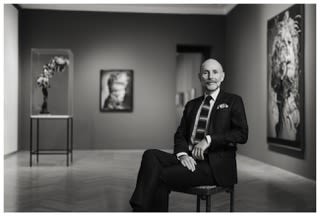
Glenn Brown is a British artist known for the use of art-historical references in his paintings. His grotesque yet fascinating figures appear to be painted with impasto (densely applied paint), but are actually executed through the application of thin, swirling brushstrokes which create the illusion of almost photographically flat surfaces. Brown sees these appropriations and oppositions as key to his approach. In the past few years, Brown has extensively embraced drawing. Still conceptually rooted to art-historical references, he stretches, combines, distorts and layers images to create subtle yet complex line-based works.
His work has been the subject of countless solo and group exhibitions, including at the Louvre , Paris (2022), Centre Pompidou, Paris (2021), Nationalmuseum, Stockholm (2020), British Museum, London (2019), Scottish National Gallery (2018), Rembrandt House, Amsterdam (2017), Contemporary Art Center, Cincinnati (2016), Centre Pompidou Malaga (2015), Saatchi Gallery (1995, 2014), Guggenheim Museum, Bilbao (2013), Kunsthalle, Vienna (2011), Gwangju Biennale, Korea (2010), Tate Liverpool (2009), Kunsthistorisches Museum, Vienna (2008), and many more. His exhibition at Sprengel Museum and Landesmuseum in Hannover, Germany is set to open next year.
Glenn Brown was appointed CBE in the Queen’s 2019 birthday honours list for his service to the arts.
Justin Peck choreographer
PROMS DEBUT ARTIST
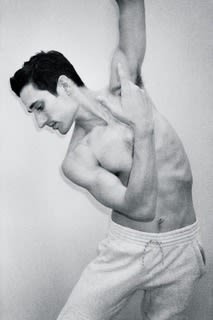
Justin Peck is a choreographer, film-maker and dancer based in New York. After attending the School of American Ballet, Lincoln Center (2003–6), he was invited to join the New York City Ballet as a dancer in 2006 and was promoted to the rank of Soloist in 2013, performing full-time with the company till 2019. He began choreographing in 2009 at the New York Choreographic Institute, and in 2014, after the creation of his ballet Everywhere We Go, was appointed Resident Choreographer of NYCB and became the subject of the documentary Ballet 422, which follows his creation of a new piece for the company.
As a performer, he has danced a vast repertoire of works by George Balanchine, Benjamin Millepied, Alexei Ratmansky, Jerome Robbins, Lynne Taylor-Corbett, Christopher Wheeldon and others. As a choreographer, he has created more than 50 dances which have been performed by ballet companies around the world. His musical collaborators have included Dan Deacon, Bryce Dessner, Nico Muhly, Dolly Parton, Caroline Shaw, Stephen Sondheim, Sufjan Stevens and Chris Thile. January 2023 will see the premiere of a new full-evening ballet set to music by Aaron Copland at NYCB, in collaboration with artist Jeffrey Gibson.
In film-making, his focus has been exploring innovative ways of presenting dance on film. Among films he has choreographed is the 2021 remake of West Side Story in collaboration with Steven Spielberg.
His awards include a 2015 Bessie Award (for Rodeo: Four Dance Episodes), the 2016 Gross Family Prize (Everywhere We Go), a 2018 Tony Award (Carousel) and the Golden Plate Award from the Academy of Achievement (2019).
Raf Simons costume designer
PROMS DEBUT ARTIST

Raf Simons graduated in Industrial Design and worked as a furniture designer before changing his profession to become a self-trained menswear designer. In 1995 he launched his Raf Simons label and in 2000 he was appointed Head Professor of the Fashion Department at the University of Applied Arts in Vienna, a position he held for for five years. From 2005 to 2012 he was Creative Director of Jil Sander, and in 2012 he was named Artistic Director of Christian Dior for women’s Haute Couture, Ready-to-Wear and accessories. From 2016 to 2018 he was Chief Creative Officer at Calvin Klein. Currently he is Co-Creative Director at Prada, working with Miuccia Prada on creative input and decision-making.
Music, art, performance, images and words have a substantial role in the kind of world Raf Simons wants to project. At the core of his universe are attitudes, moods and statements about individuality and independence. Equally important is his constant quest for innovation. His designs look to the present and the future, even if they are inspired by historical or Classical references. With his signature style evolving and maturing, the key elements stay the same: modern proportions, a constant research for fabrics and textures and the interplay of pure construction and new shapes with the body and psyche of the contemporary man.
Raf Simons has received numerous awards, including CFDA Designer of the Year (womenswear and menswear) for Calvin Klein (2017) and again for womenswear in 2018; Prize for General Cultural Merit from the Flemish Government (2017); and BFC Designer of the Year (2017). In 2017 he was named one of TIME magazine’s 100 most-influential people.
Jason Singh soundscapes
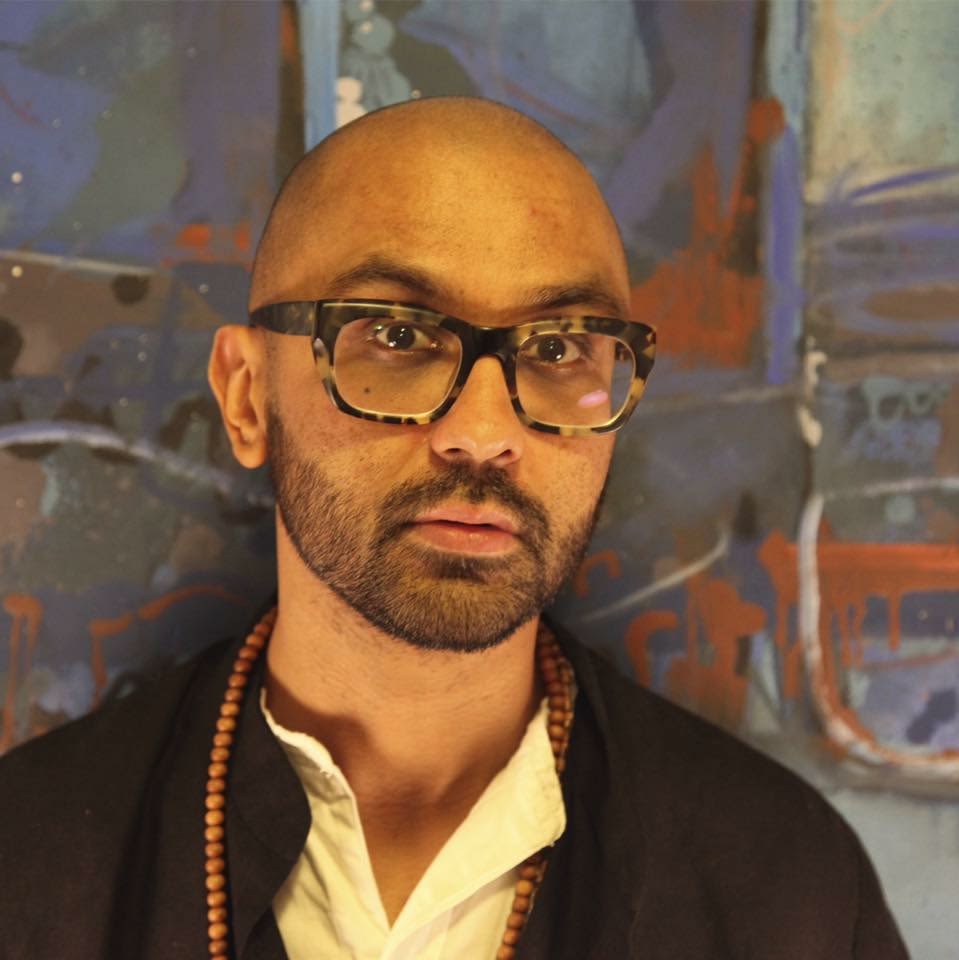
Jason Singh is a sound artist, nature beatboxer, producer, DJ, facilitator and performer. His work is an ongoing exploration of the natural world, the human voice and music technology.
With works spanning a wide range of creative disciplines, his output includes immersive audio installations, sound-works derived from plant biodata, live beatbox film scores, radio programmes, sound design for theatre, film and DJ sets. He also vocally recreates birdsong and entire forest environments and his work has featured on the BBC’s Springwatch, Countryfile, Radio 3 and Radio 6 Music.
Jason Singh’s collaborators and commissioners include a diverse range of organisations and artists including Sir David Attenborough, George Ezra, the BBC, V&A Museum, Kew Gardens, Chester Zoo, BFI, RNLI, National Trust, Tate Britain, Yazz Ahmed, Shabaka Hutchings, Sarathy Korwar, Nitin Sawhney, Talvin Singh and Rokia Traore among others.
Visionaire producers
PROMS DEBUT COLLABORATORS
Visionaire founders Cecilia Dean and James Kaliardos have been collaborating with the biggest and most talented personalities in the creative industries for over 25 years. Visionaire conceptualises and produces events, installations, films, digital content and art publications, all curated through the lens of art, fashion and contemporary culture. By allowing a platform for creative freedom, Visionaire shares ideas and experiences with its audiences.
The English National Opera Orchestra
The repertoire of the ENO Orchestra spans four centuries, providing the musical landscape and emotion for all ENO productions. As comfortable in the fun and sparkle of Gilbert and Sullivan as it is in Wagner’s epic scores, the orchestra also brings to life the complexities and colours of contemporary operas, including those by Birtwistle, John Adams and Tansy Davies, as well as musical theatre productions such as Sweeney Todd, Sunset Boulevard and (recently) My Fair Lady.
With an established reputation for its Handel work, from pioneering performances with Charles Mackerras in the 1980s to new work with specialists such as Laurence Cummings for the BBC Two broadcast of Messiah (2021), the orchestra has in recent years also received praise for its performances of operas by Philip Glass, including Satyagraha and Akhnaten.
Performances next season include Puccini’s Tosca, Gilbert and Sullivan’s The Yeomen of the Guard, Jake Heggie’s It’s a Wonderful Life, Britten’s Gloriana, Glass’s Akhnaten, Górecki’s Symphony of Sorrowful Songs and the UK premiere of Jeanine Tesori’s Blue.
The orchestra runs several schemes including ENO Evolve (which, in tandem with the Royal College of Music, seeks to train the next generation of players); the ENO Orchestral Fellowship for Ethnically Diverse String Players; and the ENO Mackerras Fellowship (supporting new conductors).
The orchestra and the ENO Chorus were joint winners of the 2016 Olivier Award for Outstanding Achievement in Opera for their work on the productions of The Force of Destiny, The Lady Macbeth of the Mtsensk District and The Queen of Spades.
Music Director
Martyn Brabbins
Artistic Director
Annilese Miskimmon
First Violins
Richard Blayden
Julia Rumley
Simon Jackson
Emre Engin
Jeremy Allen
Second Violins
Sophia Durrant
Sophie Kostecki
Jonathan Newton
Naomi Mitchell
Glen Sheldon
Violas
Rebecca Chambers
Duncan Anderson
Terry Nettle
Samantha Hutchins
Cellos
Timothy Walden
David Newby
Nina Kiva
Francesca Cull
Double Basses
Hugh Sparrow
Rupert Ring
Flute
Claire Wickes
Oboes
Rosie Staniforth
Helen Vigurs
Clarinets
Barnaby Robson
Robert Ault
Bassoons
Josh Wilson
Simon Couzens
Horns
John Thurgood
Andrew Sutton
Trumpets
Paul Bosworth
Simon Gabriel
Trombone
Becky Smith
Bass Trombone
Joe Arnold
Tuba
Andrew Cresci
Harp
Alison Martin
Lute
Arngeir Hauksson
Harpsichord
Chris Hopkins
The list of players was correct at the time of going to press
CEO
Stuart Murphy
Associate Artistic Director
Bob Holland
Director of the Music Department
Richard Meads
Orchestra Manager
Cath Welsby
Orchestra Logistics Manager
Kevin Elwick
Stage Manager
James Bartrum
Assistant Stage Manager
Becca Vince
Music Staff
Murray Hipkin
Chris Hopkins
Video Credits
‘Inumano Fratel … Stille amare’
by James Ivory and Pix Talarico
Anthony Roth Costanzo actor
Marque Hitchenor actor
Patricio Suarez director of photography
Federico Escofet sound
Victoria Sendra first assistant camera/drone pilot
Armor Marque Hitchenor, Jared Aswegan costumes
Jeremiah Rusconi location scout
Eric Freer stills photography
Jason Dominski, Luca Lucenari production assistants
The film-makers would like to thank Melissa Chung (Red Creek Productions) and the Merchant Ivory Foundation, Claverack, New York.
‘Liquid Days’
by Mark Romanek
Ron ‘Myles Yachts’ Myle dancer
Ron Myles, Rich + Tone choreography
Krista Worby producer
Adam Richards cinematography
Nick Müller steadicam operator
Garrett Curtis assistant camera
Ryley Fogg utility
Jamie Davis gaffer
Ethan Molomut, Impact AV sound
Camille Garmendia/Catalina Elgarrista wardrobe
Nick Rondeau (Arcade Edit) editor
Miles Kinghorn (Timber) colour
Matthew Horn assistant to director
Drew Brandon Jones assistant to producer
The film-makers would like to thank Kirsten Thon-Webb, Damian Stevens, Paul Martinez, Melody Alexander, Josh Snyder, William Martel, Ava Stearns and Isobel Romanek.
‘Rompo i lacci’
by Tilda Swinton and Sandra Kopp
William Khan editor
‘No more, you petty spirits’
by Jacolby Satterwhite
© Jacolby Satterwhite, courtesy of the artist and Mitchell-Innes & Nash, New York.
‘Lascia ch’io pianga’
by James Kaliardos
Marisa Tomei actor
William Khan editor
‘In the Arc of Your Mallet’
by Daniel Askill
A Collider Studio production, in association with Visionaire,from a story by Daniel Askill, Lorin Askill and Gregory Stern
Evnika Sadvakassova actor
Anthony Roth Costanzo counter-tenor
Sidi Larbi Cherkaoui movement direction
Daniel Askill, Lucy Warren Bidwell, Sara Greco, Gregory Stern executive producers
Jason Baum producer
Jacob Møller cinematographer
Lorin Askill editor
Todd Sarsfield (Strange Invention) VFX supervisor
Jordan Askill, Calvin Klein costume designers
Q Department sound design/mix/additional music
Daniel Askill, Jordan Askill, Andrew van der Westhuyzen android concept design
Framestore additional VFX
Andrew van der Westhuyzen title design
Patrick Walsh Jr stunt co-ordinator
Lucy Warren Bidwell casting director
Oscar Ramos choreography assistant
Brie Welch stylist
IRL Creative android fabrication
Collider Sydney pre vis
Matthew Osborne (The Mill) colour
‘Vivi, tiranno’
by Maurizio Cattelan and Pierpaolo Ferrari (Toiletpaper)
Yuri Ancarani, Caterina Viganò directors
Micol Talso art director
Francesca Cefis, Sarah Grittini, Elisa Zaccanti stylists
Lorenzo Zavatta hair and makeup
Michela Natella set design
William Kahn editor
‘How all living things breathe’
by Rupert Sanders
David Zander producer
Kate Leahy executive producer
Laurie Boccaccio line producer
Tom Townend director of photography
Greg Dobbin first assistant director
Dominic Watkins production designer
Oskar Charpentier costume designer
Jana Dopitova hair and makeup
Tomas Smrcek CZ line producer
Alexandra Vondrackova CZ production manager
Vladimira Michalkova Horakova actress
Martin Svoboda samurai
Neil Smith editor
Marlo Baird post producer
Bomyee Hwang visual effects MPC/producer
Jim Spratling visual effects supervisor
Colin Clarry head of production
Ryan Mcdougal 3D supervisor
Neela Parankusham visual effects production co-ordinator
Ruari Twohig, David Anger, Gijo George, Venkata Mannepalli, Subbaiyan Ramalingam Mithun, Jacob Alex, Kajal Pandya, Joshi John Balakrishnan 2D artists
Suhas Bhat Nallur, Rodrigo Carrasco, Josh Hatton, Lyndsey Horton, Matthew Maude, Jacob Oommen, Debasish Raha, Shiny Rajan, Achi Raju Konduru Ramdoss 3D artists
‘Penna tirana’
by AES+F
‘The Encounter’
by Mickalene Thomas
William Khan editor

